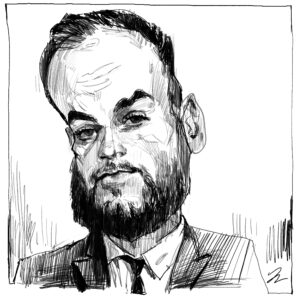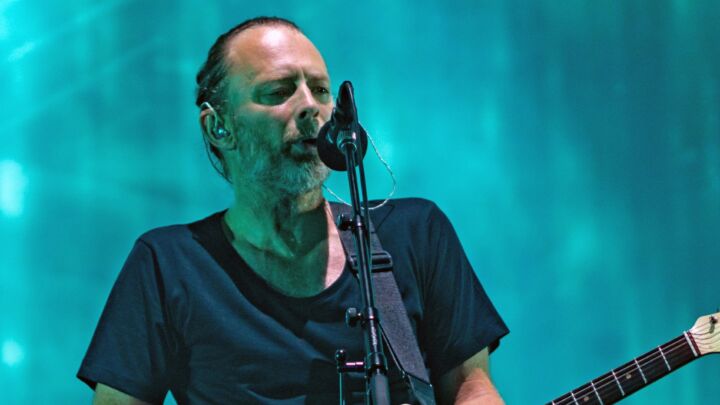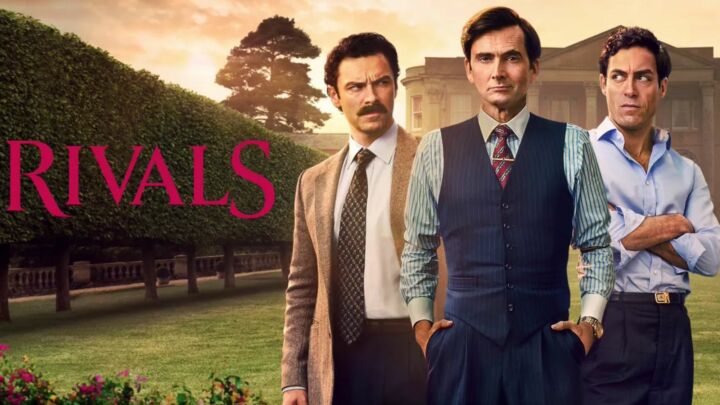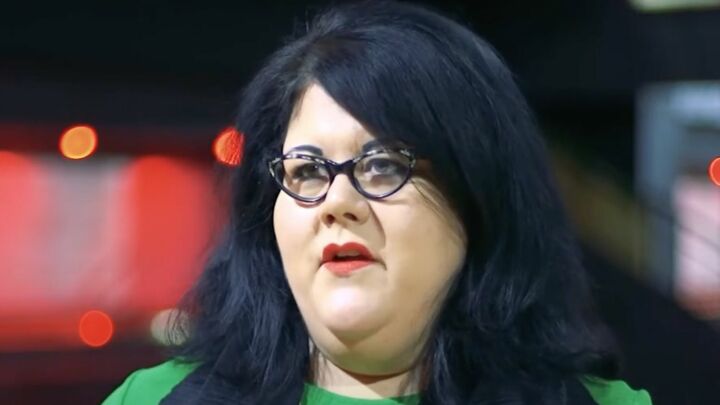Thirst: a vampire film for grown-ups
If you, too, are bored by the emo, sexless, vegetarian vampires of Twilight, check out Chan-wook Park’s new movie.

Want to read spiked ad-free? Become a spiked supporter.
Youth is wasted on the young, said George Bernard Shaw. These days, so are vampires.
In recent years, thanks mostly to Stephenie ‘Twilight’ Meyer and, before her, Joss Whedon’s Buffy the Vampire Slayer, vampires have become symbols, not of foreignness, alienation, unspeakable lust and all the other things that coursed through the veins of vampire stories from Bram Stoker to Near Dark, but instead of teenage self-pity. Thank God, then, for Thirst, a brilliant new film about Korean Catholic vampires which could easily have come with the strapline: ‘Not Twilight. Not for teenagers. No expressions of angst to a soft-rock soundtrack.’
Directed by Chan-wook Park, who will go down in film history for 2003’s Oldboy, Thirst tells the story of a South Korean Catholic priest, Sang-hyun, who decides to take part in an experiment to find a vaccine for a deadly virus. The experiment goes horribly wrong and a blood transfusion turns Sang-hyun into a freak of the night with an insatiable lust for human blood. If that isn’t enough to draw you in – Catholics? Vampires? Blood? What more do you want? – you might also want to know that Park’s film is loosely based on Émile Zola’s Thérèse Raquin, in that it also features a pretty woman, Tae-ju, who is locked in a loveless marriage with a superbly irritating spoilt mummy’s boy, Kang-woo, and who escapes it by succumbing to the awkward advances of our handsome, blood-quaffing priest. (Zola’s novel does not have vampires in it, I know. Or Koreans. But it does feature just such a love triangle between a lonely woman, her irritating husband, and an alluring outsider.)
Sang-hyun turns Tae-ju into a vampire and they go looking for blood. Lots of it. In keeping with virtually every vampire story ever told, Sang-hyun is an emotionally torn character who has profound issues with his post-Catholic priest existence as a super-strong creature who feasts on the red stuff (real blood, that is, rather than the alcoholic ‘blood of Christ’). Molly Williamson, author of The Lure of the Vampire, says the vampire has traditionally been ‘a pathos-filled creature who has been at odds with his ontology and his innate desires’ (1). This is doubly the case for Sang-hyun, who one day was helping the poor and handing out communion wafers and the next is wandering through hospital corridors in the dead of night looking for comatose patients whose blood he might suck without causing them too much internal damage, because he can’t bring himself actually to hunt human beings.
Tae-ju suffers no such internal angst at becoming a monster. In response to her previous life as a meek little wife kept virtual prisoner by her sap of a husband and his overbearing mother, she tightly embraces her new human-hunting, buildings-leaping life. She kills unsuspecting motorists and sinks her teeth into their jugulars. She takes great pleasure in her vampiric ability to fly (whereas Sang-hyun is sheepish in his use of this godlike skill). She helps visit vengeance on her sap of a husband. And so the scene is set between the ‘good vampire’ and the ‘bad vampire’, between decent Sang-hyun and indecent Tae-ju, who are bound together by bloodlust but ripped apart by morals and who, if they’re not careful, might just end up destroying each other.
Some Twilight fans – and they’re not all teenage girls; I know one who is 34 and male – will think this sounds familiar. The Twilight stories also feature good vampires (the Cullens) who struggle with their moral and bodily constitutions and only drink animal blood, and bad vampires (the Nomads) who have pointy teeth, don’t mind devouring human blood and, worst of all, want to kill Bella, the human chick who is, like, really pretty and stuff. Yet what is striking about the Twilight saga’s projection of vampire lore on to American high-school life, so that 108-year-old, super-pale, emo vampire boys become just another youth tribe alongside jocks, geeks and sluts, is how it removes the traditional struggle of the vampire from any recognisable moral universe and makes it instead all about self-reflection and teenage narcissism.
If Thirst, in an updated, Korean version of so many vampire tales before it, is a blood-spattered story about alienation from ‘the human’, and a struggle by one individual to reconnect with human values and by another to let go of them with gleeful abandon, then the Twilight saga is about little more than the whimsical internal life of teens.
Unlike Sang-hyun, whose post-Catholic torment at becoming a vampire is a believable moral conundrum, Edward Cullen (famously played by Robert Pattinson) resists his inner vampiric longings in the name of boring risk-aversion and do-gooding. Far from a Dracula-style neck-chomper, he’s the poster boy for the pieties of our age: safe sex and self-denial. His is not a story of beastly excess but of heroic restraint: he’s a ‘vegetarian vampire’ (in that he drinks animal blood rather than human blood), and he suppresses his physical desire for Bella, even initially refusing to kiss her in case he is tempted to bite and suck. In short, he’s a veggie and a celibate, half-Linda McCartney, half-Benedict XVI, a brooding, big-haired advert for restraint, both sexual and gastronomical, in the name of… well, nothing in particular. Where Sang-hyun, like some of the vampires of Romantic literature through to Mae in Kathryn Bigelow’s Near Dark (1987), fights with his vampire tendencies as part of a profound battle to be human, Edward suppresses his inner vampire because it feels like the ‘right thing’ to do – more the management of a multiple personality disorder than the monster/human moral wrestling match of vampire legend.
The Twilight vampires – back in cinemas this month in New Moon – are ideally suited to our super-pious but post-moral age, where it’s not clear why anyone would really want to be human anyway. (Indeed, it’s striking that the Twilight saga completely turns on its head the vampire-human chase, so that it’s the bored human girl who chases after the vampire, longing to be part of his underworld.) Thirst is the anti-Twilight. The human girl is no Avril Lavigne-style sourpuss but an evil bitch destined for hell, and the vampire boy (actually man) does not spend the whole time in forests talking about his feelings but instead visits priests, doctors, friends – the arbiters of morality – to discuss his ‘sickness’ and his longing for a ‘cure’. And there are sex scenes – very long, very noisy sex scenes – that would bring a blush even to Edward Cullen’s pasty face. Leave the kids at home tucked up in bed with their Stephenie Meyer novels and see Thirst while you can.
Brendan O’Neill is editor of spiked. His satire on the green movement – Can I Recycle My Granny and 39 Other Eco-Dilemmas – is published by Hodder & Stoughton. (Buy this book from Amazon(UK).)
Watch the trailer for Thirst here:
Read on:
spiked-issue: Film
(1) Quoted in How vampires got all touchy-feely, Brendan O’Neill, BBC News, 19 December 2008
Celebrate 25 years of spiked!
A media ecosystem dominated by a handful of billionaire owners, bad actors spreading disinformation online and the rich and powerful trying to stop us publishing stories. But we have you on our side. help to fund our journalism and those who choose All-access digital enjoy exclusive extras:
- Unlimited articles in our app and ad-free reading on all devices
- Exclusive newsletter and far fewer asks for support
- Full access to the Guardian Feast app
If you can, please support us on a monthly basis and make a big impact in support of open, independent journalism. Thank you.







Comments
Want to join the conversation?
Only spiked supporters and patrons, who donate regularly to us, can comment on our articles.